what kind of noodle to use for hot & sour soup
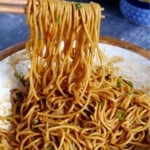
A classic breakfast dish, hot dry out noodles deliver heady flavours, pleasant textures and are very easy to brand!
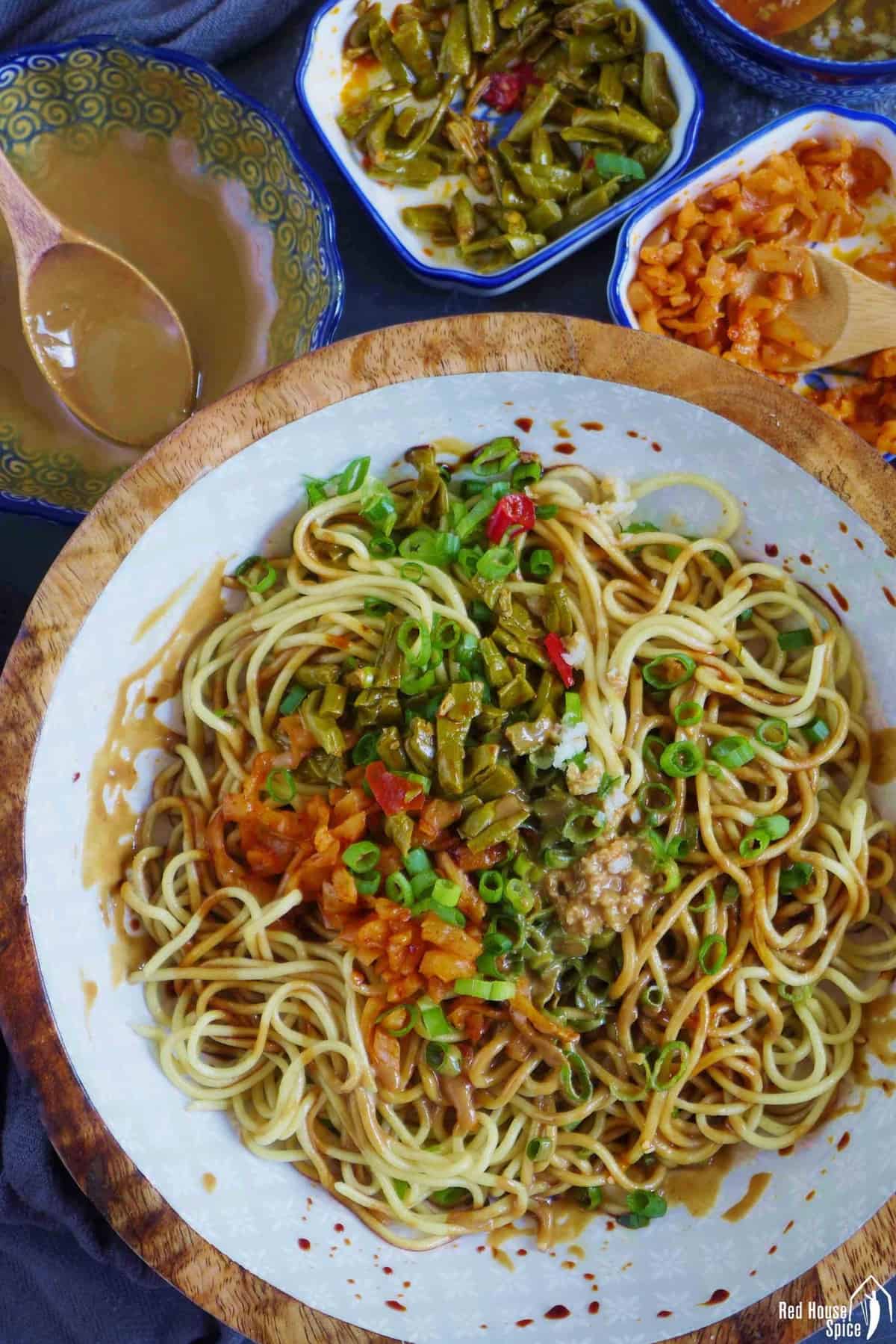
Are noodles your choice of breakfast? I certainly enjoyed them over the years: Beef Noodle Soup during my teenage years in Lanzhou and today'south recipe Hot Dry Noodles during my academy life in Wuhan, a urban center famous for its various breakfast culture.
Flavourful and comforting, a bowl of freshly made hot dry noodles prepares the bulk of Wuhan locals for a busy day. The name of the dish indicates some of its central features:
- "Hot", meaning physically hot not spicy hot, differentiates it from Chinese cold noodle dishes (Liang Mian/凉面).
- "Dry" suggests that it doesn't come with a soup/goop but only dressings and toppings.
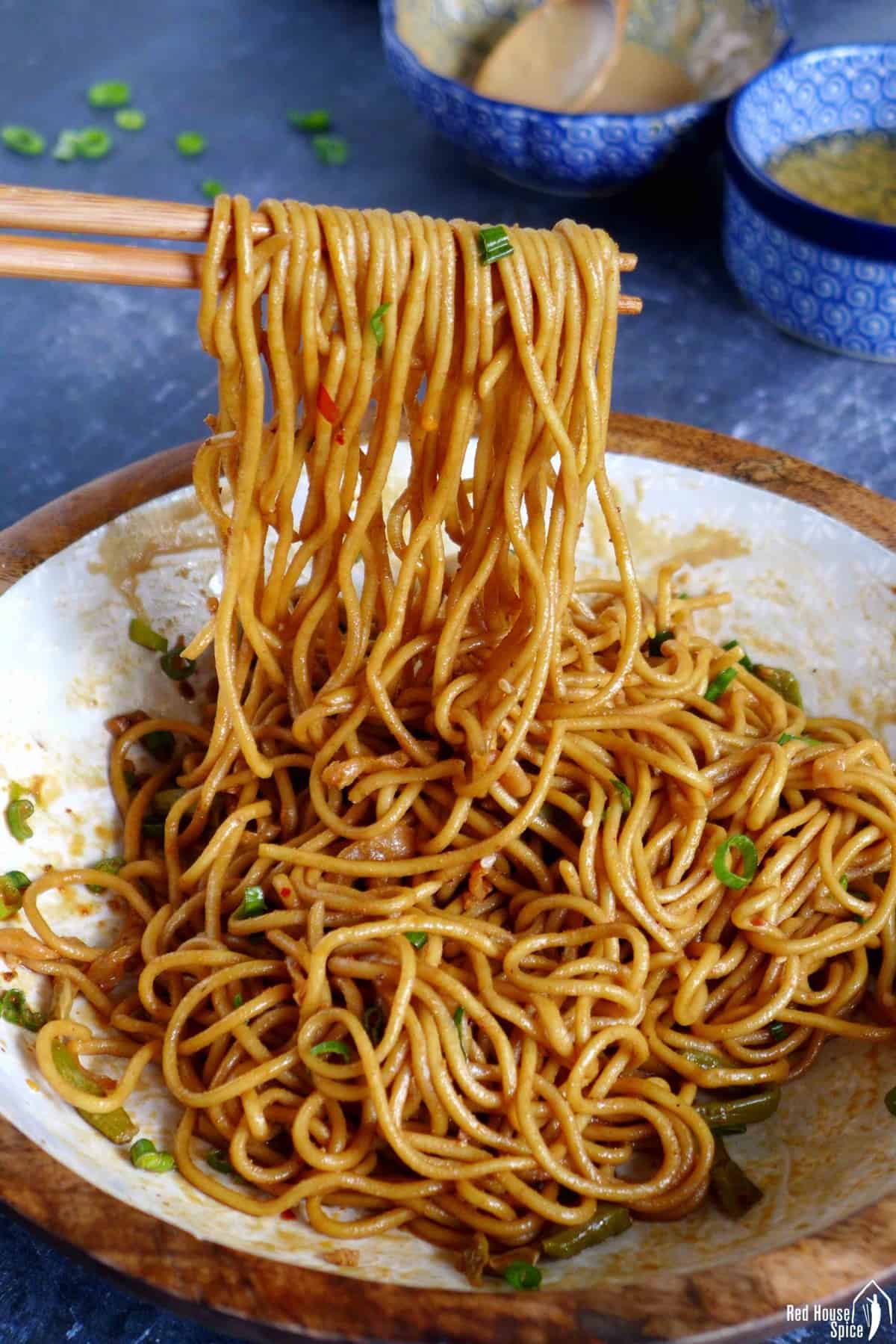
If you're a fan of the famous Sichuan Dan Dan noodles, this is definitely your recipe to try. These two dishes share some similarities, e.g. the use of sesame paste and preserved vegetables, the intense flavour, etc. Merely hot dry out noodles are even simpler to make: Boil the noodles. Add the seasonings and toppings. Mix and enjoy!
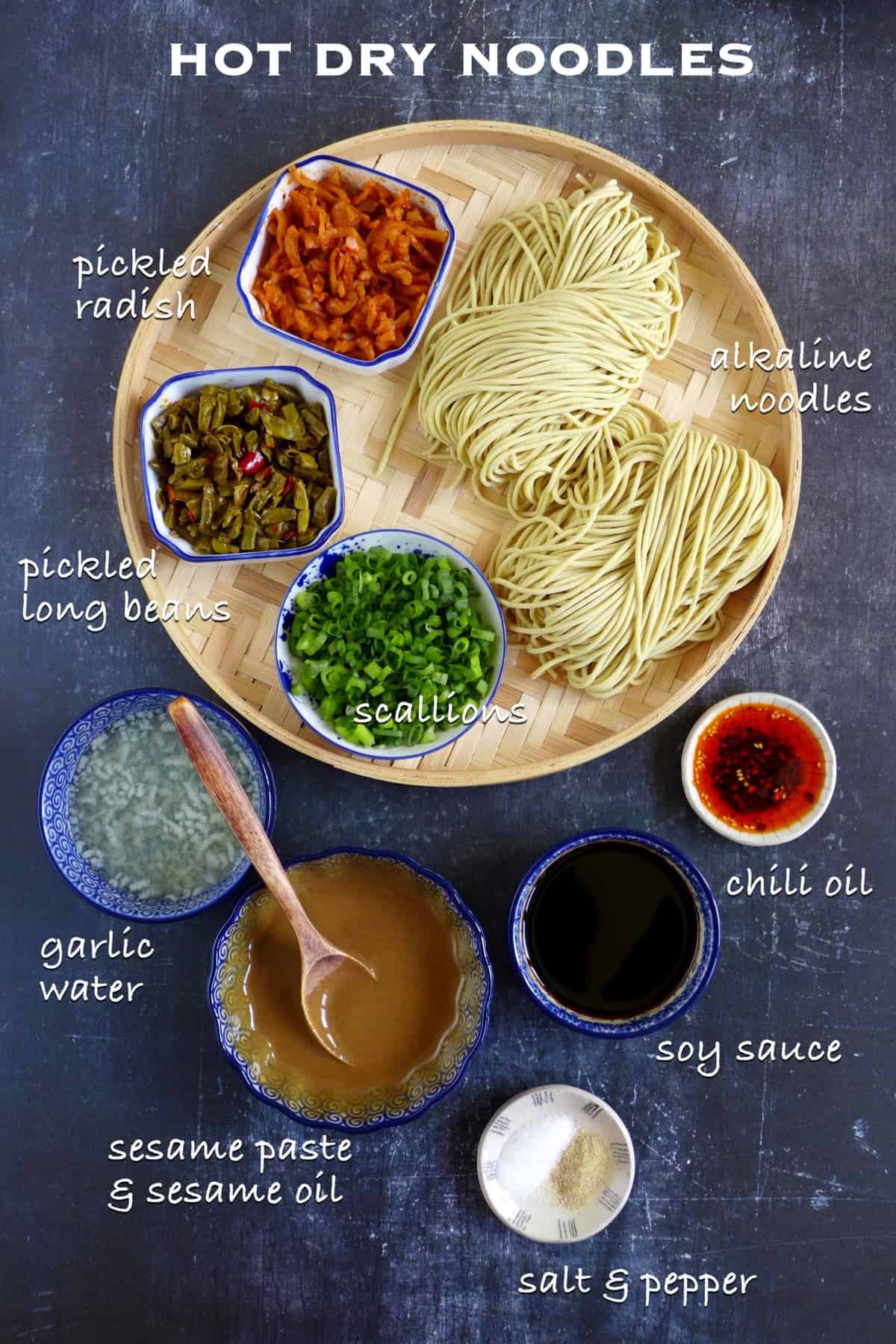
What type of noodles
The original Wuhan hot dry noodles phone call for round, yellowish, medium-sized alkaline noodles (aka ramen noodles, 碱水面). Thanks to the alkaline amanuensis, this type of noodles have a bouncy, springy texture and a pleasant hint of element of group i gustatory modality.

You can apply shop-bought dried ramen noodles (not the instant type though). But if you lot're keen to replicate the dish in its most authentic way, make some yourself! I have a recipe for Homemade Alkaline metal Noodles that includes detailed instructions and a tutorial video.
Substitutes:
Apart from the regular version with alkaline noodles, hot dry out noodles are sometimes served with rice noodles, known as Re Gan Fen (热干粉) in Chinese. So it's a perfect gluten-free alternative (brand sure y'all use gluten-free soy sauce in this case).
Another substitute is spaghetti. Information technology may sound foreign to use Italian pasta in a classic Chinese dish simply it does piece of work quite well. Although defective alkaline metal season, spaghetti delivers a similar look, colour and texture.
How to cook the noodles
To make a great bowl of hot dry noodles, the starting time and foremost matter is to cook the noodles to perfection. The fundamental is not to overcook. The noodles should gustation reasonably firm and have a piffling resistance when bitten. Soggy, mushy noodles are what you demand to avert.
The traditional method
At Wuhan's breakfast stalls, hot dry noodles are served in a super speedy way. The chefs would dip the noodles in boiling water for just a few seconds. This is considering they are pre-cooked before the stalls open up for business concern.
If you'd like to follow this traditional, two-footstep cooking procedure, here is what you need to do:
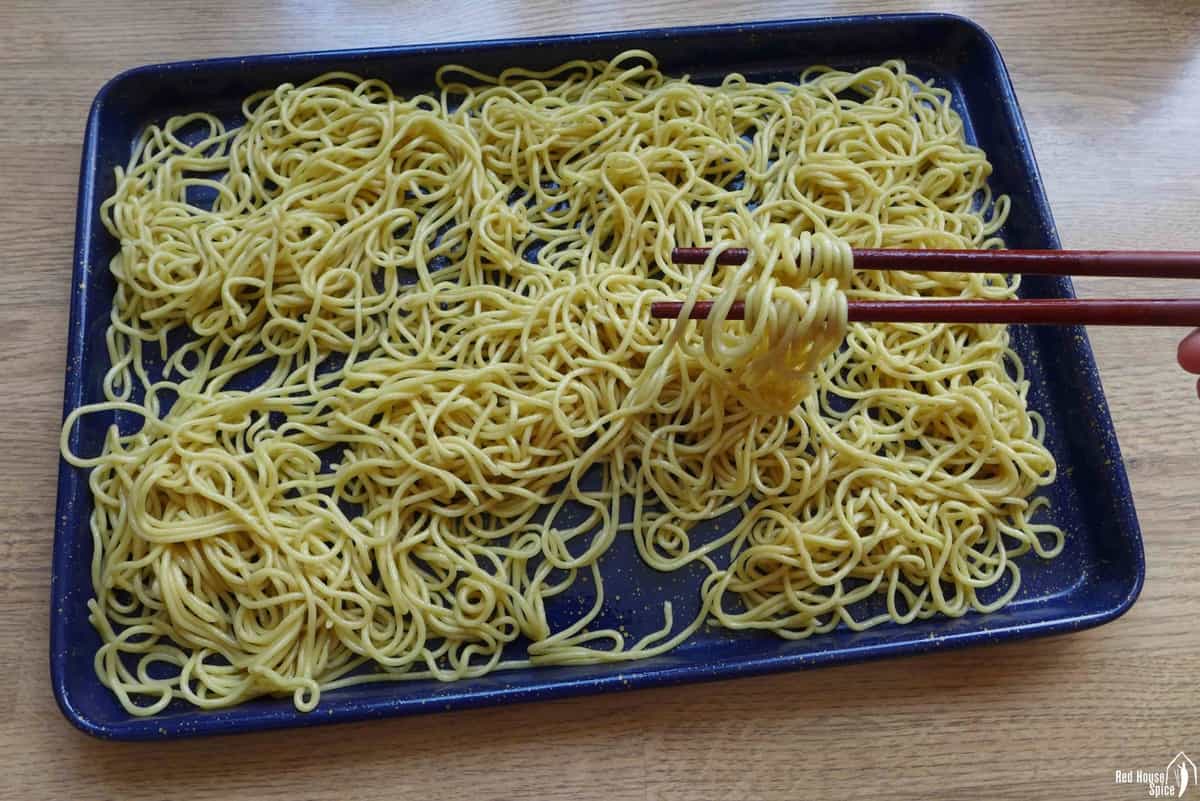
- Bring a large pot of water to a full boil. Add the noodles and melt until they go "Al dente" (only cooked and house in the centre when bitten).
- Drain and transfer the noodles to a tray and coat them with a little sesame oil. Lift and drop the noodles with chopsticks in a fast and repeated fashion to cool the noodles (Stall owners unremarkably use electric fans to accelerate the process).
- In one case cooled, these noodles can be kept on the counter for several hours or in the fridge for upward to 3 days. Whenever needed, just driblet them in boiling h2o for a few seconds to warm up.
The fast method
The traditional method is great when yous programme to gear up part of the dish in advance. Just if you lot're serving it correct abroad, this technique seems overly complicated. Here is the alternative fast method:
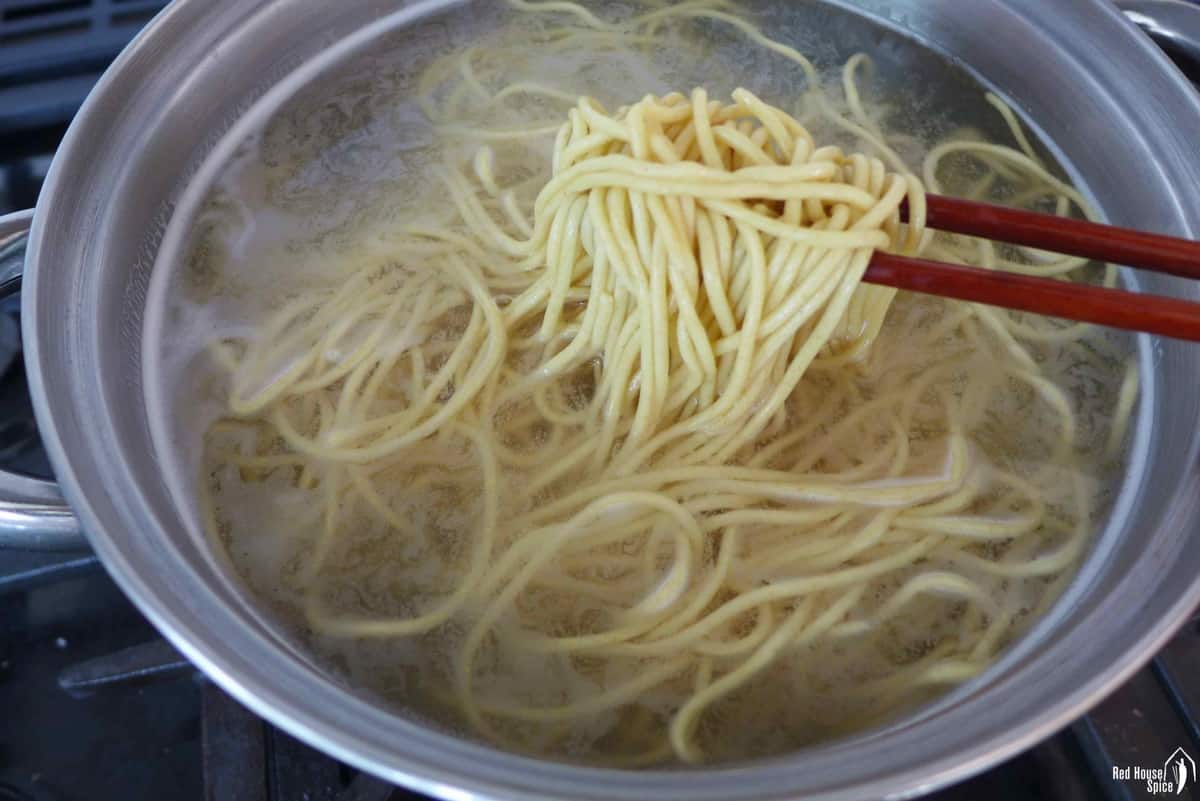
- Add the noodles to boiling h2o and cook until "al dente".
- Bleed them immediately then rinse under running h2o for a few seconds to remove extra starch.
🛎 Tip: To test for "al dente" texture, pinch a noodle with your finger. It should pause quite easily just it doesn't feel gummy or starchy.
Sesame paste is indispensable
Chinese sesame paste (Zhi Ma Jiang/芝麻酱) is the cadre seasoning for hot dry out noodles. Unfamiliar with this condiment? Here are its key characteristics:
- It's made of toasted whole sesame seeds. This makes it different from Tahini (the main component of hummus) which is usually made with raw, hulled sesame seeds (sometimes lightly toasted).
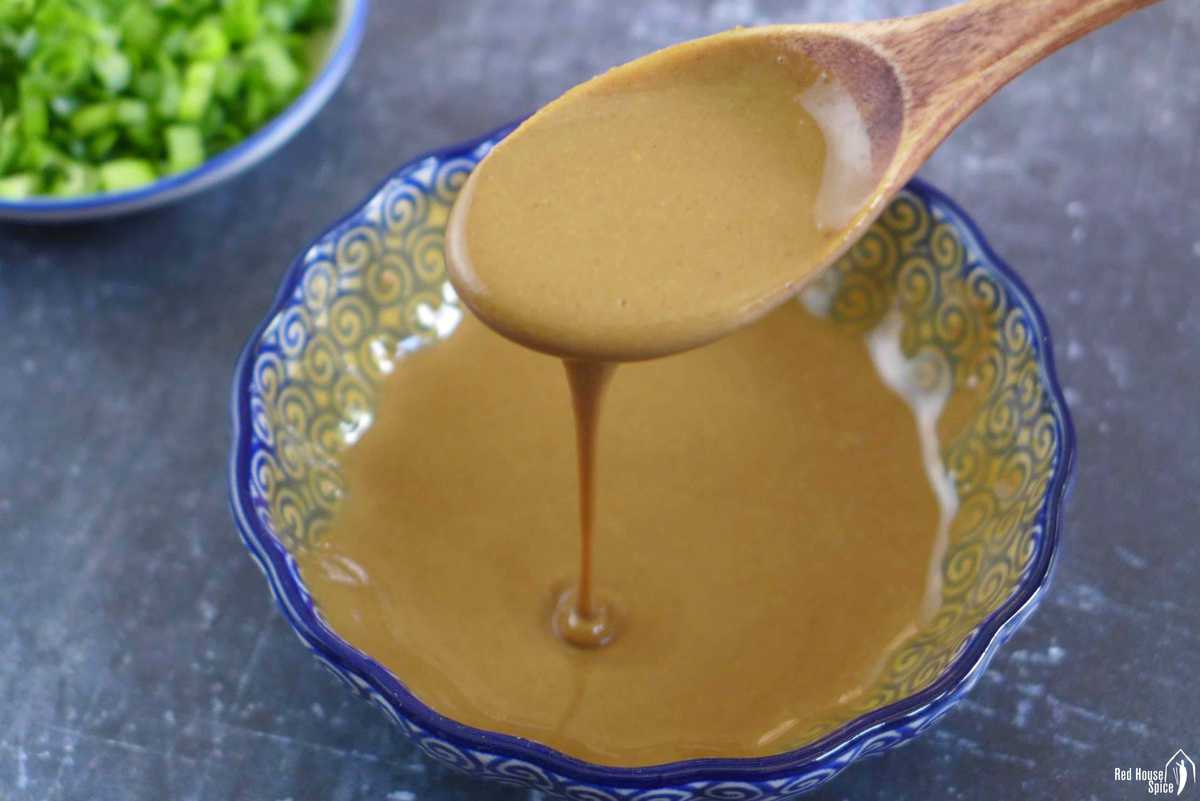
- It has a dark brown colour and a very thick consistency. You'll need to thin it with water before calculation it to dishes (add some sesame oil if you desire to raise its flavour).
Sesame paste is available in virtually Chinese/Asian stores. Apart from pure sesame paste which I use for today'due south recipe, some make, e.g. Wangzhihe/王致和, also produces a version that contains l% of sesame seeds and 50% of peanut. If using this type, y'all'd demand less h2o to thin it.
Unable to observe sesame paste? Check out my post on Iii Substitute Ideas for Sesame Paste to become some inspiration.
Preserved vegetables
Another important component of hot dry out noodles is the flavourful toppings. They normally consist of ii-3 types of preserved vegetables which lend saltiness and umami gustation to the dish. What I used are two classic choices:
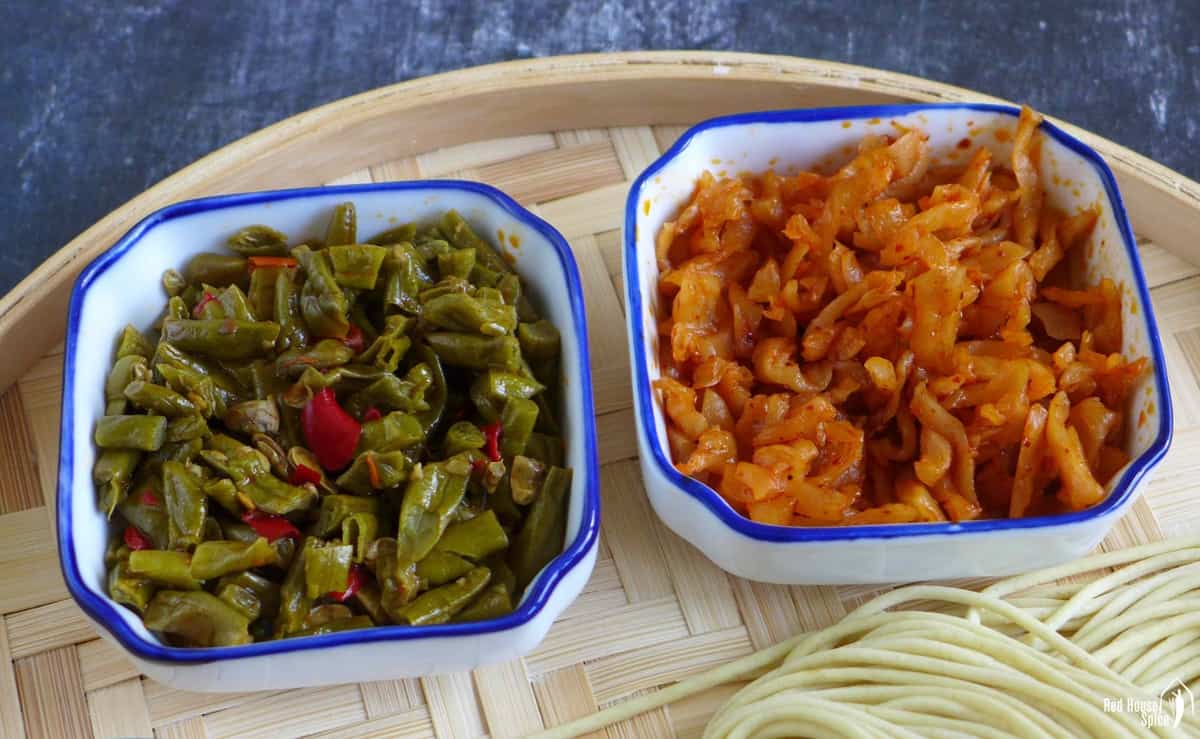
- Pickled long beans (酸豇豆)
- Preserved daikon radish (辣萝卜干)
Not only exercise they add together some other layer of flavor, they as well provide a crunchy "mouthfeel" (Chinese capeesh the mix and match of textures very much). Normally in sachets or jars, they can be found in about Chinese stores.
🛎 Substitutes: Preserved mustard stem (Zhacai/榨菜) is a good alternative and it's more commonly available. Pickled chilies could piece of work likewise.
Other seasonings
Autonomously from sesame paste and preserved vegetables, yous also demand the following seasonings:
- Sesame oil. I add information technology to the sesame paste to heighten the nutty, effluvious flavour. It likewise helps to effectively thin the paste.
- Minced garlic. Soak it in hot water to decrease its sharpness but release more olfactory property.
- L ight and dark soy sauce. The night version is for giving the noodles a dark-brown shine. If unavailable, just apply the light ane.
- Table salt & footing white pepper
- Chili oil. Information technology's optional simply I highly recommend information technology.
Serve the Noodles
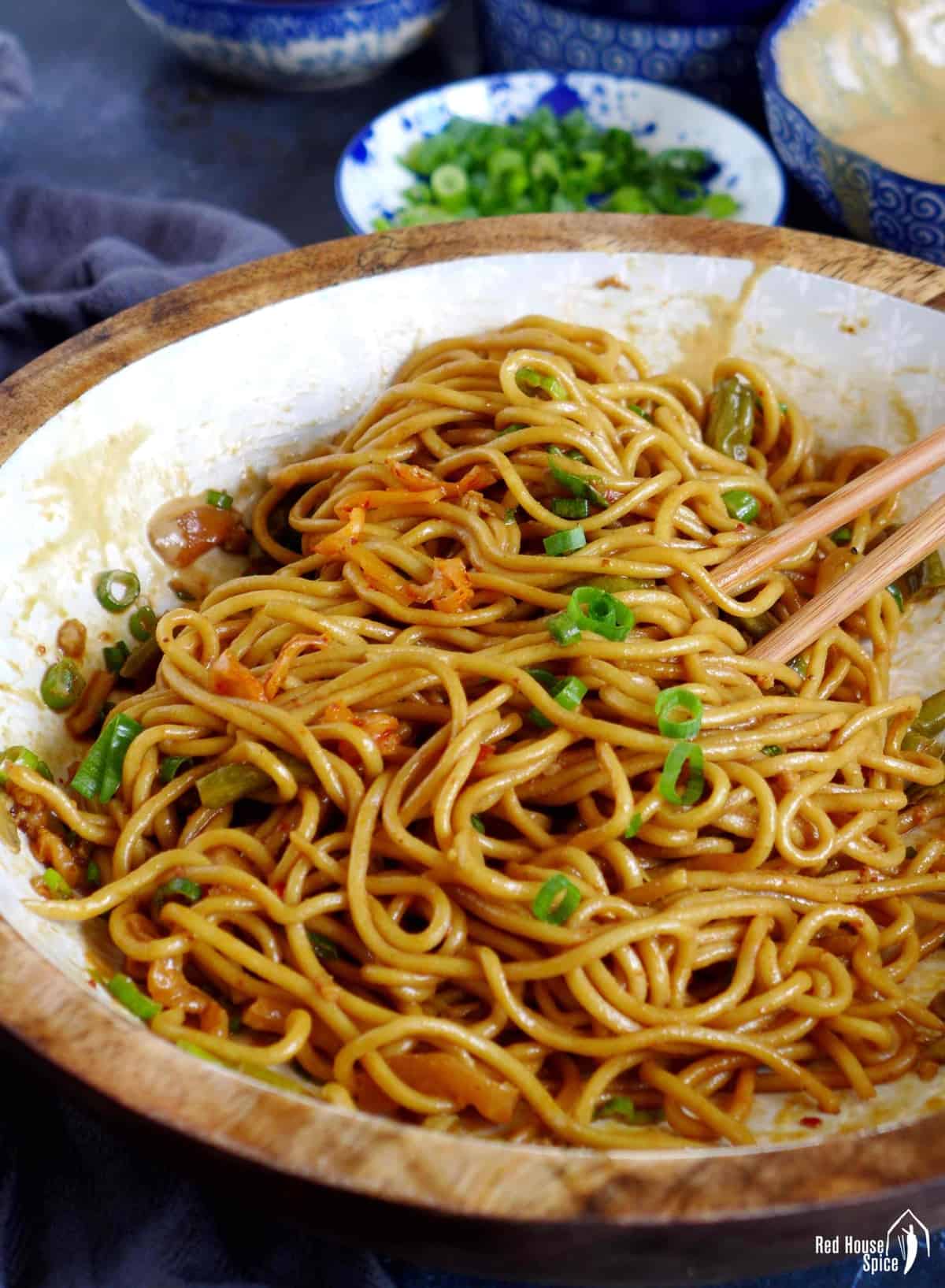
Once all the ingredients are put into the serving bowl, information technology's of import that you stir and mix the noodles without delay. If yous leave them to sit for too long, the noodles strands will go sticky thus difficult to separate.
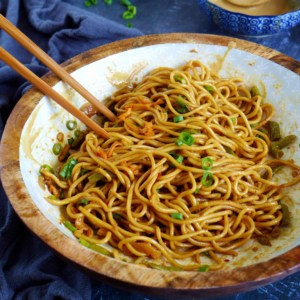
- 2 portions alkaline noodles, see note one for substitutes
For the toppings
- Pickled long beans (酸豇豆), chopped, See notation three
- Preserved daikon radish (萝卜干), chopped, Encounter note iii
- Scallions, finely chopped
-
Heat upwardly a large pot of water. While waiting for the water to eddy, add together sesame paste, sesame oil and ane tablespoon of h2o to a basin. Stir to thin the paste until it reaches a smoothen and runny consistency.
-
Put minced garlic into another small bowl. One time the h2o starts to boil, spoon out 2 tablespoon of hot water and pour over the garlic. Set aside.
-
Add together alkali metal noodles to the boiling water. Cook until they're "Al dente" (merely cooked and house in the eye when bitten).
-
Rinse the noodles under running water for a few seconds so drain. Divide them into ii serving bowls (encounter annotation 4).
-
For EACH bowl, add together 1 tablespoon of calorie-free soy sauce, ½ teaspoon of nighttime soy sauce, 1 pinch of common salt, 1 pinch of ground white pepper and a dash of chili oil if using.
-
Split the thinned sesame paste and garlic water and add together to the 2 bowls of noodles.
-
Garnish with pickled long beans, preserved radish and scallions. Stir the noodles to evenly distribute the dressing. Serve immediately.
1. The traditional recipe calls for fresh element of group i noodles. Yous may utilise dried ramen noodles, round rice noodles, or even spaghetti equally a substitute.
2. You can find more information most this unique additive in my post "Chinese Sesame Paste and iii Substitute Ideas".
3. Preserved mustard stem (Zhacai/榨菜) is a good alternative and it'south more ordinarily available. Pickled chilies could work too.
4. Read the main post content in a higher place if you lot wish to follow the traditional two-step cooking procedure.
Serving: 1 basin | Calories: 550 kcal
Show me your dish or enquire me questions @red.house.spice
Reader Interactions
Source: https://redhousespice.com/hot-dry-noodles/
0 Response to "what kind of noodle to use for hot & sour soup"
Postar um comentário